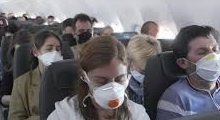“Unraveling the Complexity of Lyme Disease: A Tale of Climate, Vectors, and Research Endeavors”

In November of 1975, health officials in Connecticut were alarmed by reports of children in the small town of Lyme developing arthritis. They dispatched experts to investigate and discovered over 50 residents experiencing joint pain and swelling, some initially showing skin abnormalities and fever-like symptoms.
READ: OAS to Step in as Mediator in Guatemala’s Power Transition Crisis
Lyme
These officials hypothesized that a virus carried by biting insects might be responsible for the outbreak due to the seasonal and geographic pattern of cases and their association with skin lesions. They emphasized the need for further research to control and prevent new cases.
Nearly fifty years later, Lyme disease, named after the town, is better understood but still poses challenges. Spread by Borrelia burgdorferi bacteria through infected Ixodes ticks, it affects around 500,000 people annually in the US alone, costing nearly $1 billion in medical expenses. Climate change exacerbates this trend, expanding the disease’s reach beyond the northeastern US.
The Fifth National Climate Assessment highlights climate change’s adverse effects on human health, including increased vector-borne diseases. Factors such as rising temperatures and changing land use patterns contribute to the proliferation of diseases transmitted by ticks and mosquitoes, including Lyme disease, Rocky Mountain Spotted Fever, and others.
Ben Beard from the CDC notes a significant uptick in tick-borne diseases due to various factors, including climate change and shifts in human activities. Changes in weather patterns and land use increase the chances of human exposure to disease-carrying vectors.
The recent COVID-19 pandemic, while detrimental, has spurred positive developments in Lyme disease research. Experimental vaccines, including an mRNA-based one from the University of Pennsylvania and ongoing clinical trials by Pfizer and Valneva, offer hope for prevention.
Moreover, the recognition of persistent symptoms in Lyme disease patients, similar to “long Covid,” underscores the need for better understanding and treatment. While most patients recover with prompt antibiotic treatment, a small percentage experience lingering symptoms.
Preventive measures focus on educating the public about tick avoidance strategies, such as staying on trails, using insect repellent, and thorough tick checks. However, challenges remain in developing effective tick elimination strategies.
Despite progress in research and awareness, Lyme disease’s prevalence is expected to increase due to climate change, highlighting the importance of continued vigilance and research efforts.






